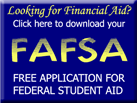



















|
|
Content provided by the Catalog of Federal Domestic Assistance
84.160 Training
Interpreters for Individuals who are Deaf and Individuals who are Deaf-Blind
FEDERAL AGENCY:
OFFICE OF SPECIAL EDUCATION AND
REHABILITATIVE SERVICES, DEPARTMENT OF EDUCATION
AUTHORIZATION:
Rehabilitation Act of 1973,
as amended, Title III, Section 302(f), 29 U.S.C. 774 (d).
|
OBJECTIVES:
|
|

|
To support projects that
increase the numbers and improve the skills of manual, oral, and cued speech
interpreters providing services to individuals who are deaf and individuals
who are deaf-blind.
TYPES OF ASSISTANCE:
Project Grants.
Place Cursor Here for Definition
|
USES AND USE RESTRICTIONS:
Grants are awarded to eligible grantees to provide training for manual,
tactile, oral and cued speech interpreters. This training may include
classroom instruction, workshops, seminars, and field placement. Curriculum
may include specialty areas such as interpreting in legal, medical, or
rehabilitation settings or for deaf-blind, speech-impaired or developmentally
disabled persons.
ELIGIBILITY REQUIREMENTS:
Applicant Eligibility: Public or private nonprofit agencies and
organizations, including institutions of higher education are eligible for
assistance.
Beneficiary Eligibility: Individuals preparing for employment as
interpreters for individuals who are deaf and individuals who are deaf- blind
who are presently serving as interpreters and wish to maintain or raise the
level of their skills, and the persons who will receive the services of
interpreters are beneficiaries of this program.
Credentials/Documentation: Costs will be determined in accordance with
OMB Circular No. A-87 for State and local governments. OMB Circular No. A-21 for
educational institutions applies.
APPLICATION AND AWARD PROCESS:
Pre-application Coordination: The standard application forms as
furnished by the Federal agency and required by Circular No. A-102 must be used
for this program. This program is eligible for coverage under E.O. 12372,
"Intergovernmental Review of Federal Programs." An applicant should
consult the office or official designated as the single point of contact in his
or her State; for more information on the process the State requires to be
followed in applying for assistance, if the State has selected the program for
review.
Application Procedure: Application is made to Department of Education,
Application Control Center, 400 Maryland Ave., SW., Washington, DC 20202-4725.
This program is subject to the provisions of OMB Circular No. A-110.
Award Procedure: All new applications are reviewed by a panel of at
least three individuals. Each panel will include one or more nonfederal
consultants with experience and training with interpreting for individuals who
are deaf and individuals who are deaf-blind.
Deadlines: Contact the headquarters office for application deadlines.
Range of Approval/Disapproval Time: Approximately 120 to 160 days.
Appeals: None.
Renewals: Renewals are available only through the new application
process. Projects with an approved multi-year project period may be continued
based on the availability of adequate funds and an annual review of
accomplishments to determine satisfactory performance.
ASSISTANCE CONSIDERATIONS:
Formula and Matching Requirements: Grantees are required to share in
the cost of projects with a portion subject to individual negotiations.
Length and Time Phasing of Assistance: Projects may be supported for a
maximum of 5 years. Funds are granted on a 12-month basis.
POST ASSISTANCE REQUIREMENTS:
Reports: Annual financial and progress reports must be submitted as
required by grant award terms and conditions.
Audits: Audits must be conducted on a continuing basis or at scheduled
intervals, usually once a year, but a least once every 2 years. Institutions of
higher education and nonprofit organizations are subject to the audit
requirements of OMB Circular No. A-133. In accordance with the provisions of OMB
Circular No. A-133 (Revised, June 24, 1997), "Audits of States, Local
Governments, and Nonprofit Organizations," nonfederal entities that expend
financial assistance of $300,000 or more in Federal awards will have a single or
a program- specific audit conducted for that year. Nonfederal entities that
expend less than $300,000 a year in Federal awards are exempt from Federal audit
requirements for that year, except as noted in Circular No. A-133.
Records: Proper records must be maintained for three years subsequent
to audit or until all audit questions are resolved.
FINANCIAL INFORMATION:
Account Identification: 91-0301-0-1-506.
Obligations: (Grants and Contracts) FY 01 $2,105,300; FY 02 est
$2,105,300; and FY 03 est $2,105,300.
Range and Average of Financial Assistance:
To be determined.
PROGRAM ACCOMPLISHMENTS:
Currently not available.
REGULATIONS, GUIDELINES, AND LITERATURE:
Training of Interpreters for Individuals who are Deaf and Individuals who are
Deaf-Blind Regulations (34 CFR 385); (34 CFR 396); the Education Department
General Administrative Regulations (EDGAR) in 34 CFR 74, 75, 77, 79, 80, 81,
82, 85, and 86.
INFORMATION CONTACTS:
Regional or Local Office: Not applicable.
Headquarters Office:
Tom Finch, Department of Education, OSERS Rehabilitation Services Administration, 400 Maryland Ave., SW, Washington, District of Columbia 20202 Email: tom.finch@ed.gov Phone: (202) 245-7343.
Web Site Address:
http://www.ed.gov/students/college/aid/rehab/catinter.html
EXAMPLES OF FUNDED PROJECTS:
Grants were awarded to colleges and universities that have ongoing sign
language/oral interpreter training programs of proven merit and serve areas
ranging from four to eight States. Some projects have been national in scope.
Programs include training courses connected to degree programs in
interpreting; short- term practical training leading to interpreter
certification; and workshops, seminars, and practicums.
CRITERIA FOR SELECTING PROPOSALS:
The relevance of the project to the stated objectives of the interpreter
training program. The number of trainees expected to be involved; demonstrated
capacity or potential for providing interpreter training, the past record of
existing training programs; and the geographical area expected to be served.

|
|
|
|
|
|
|
|
|



